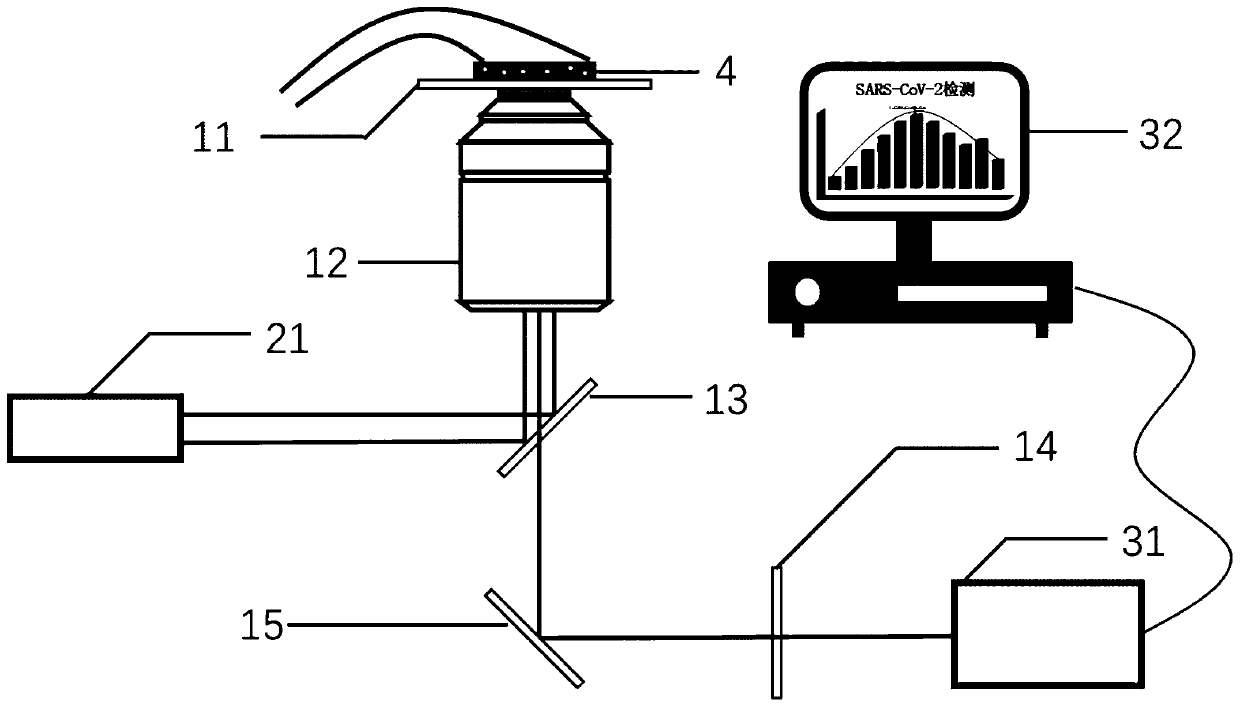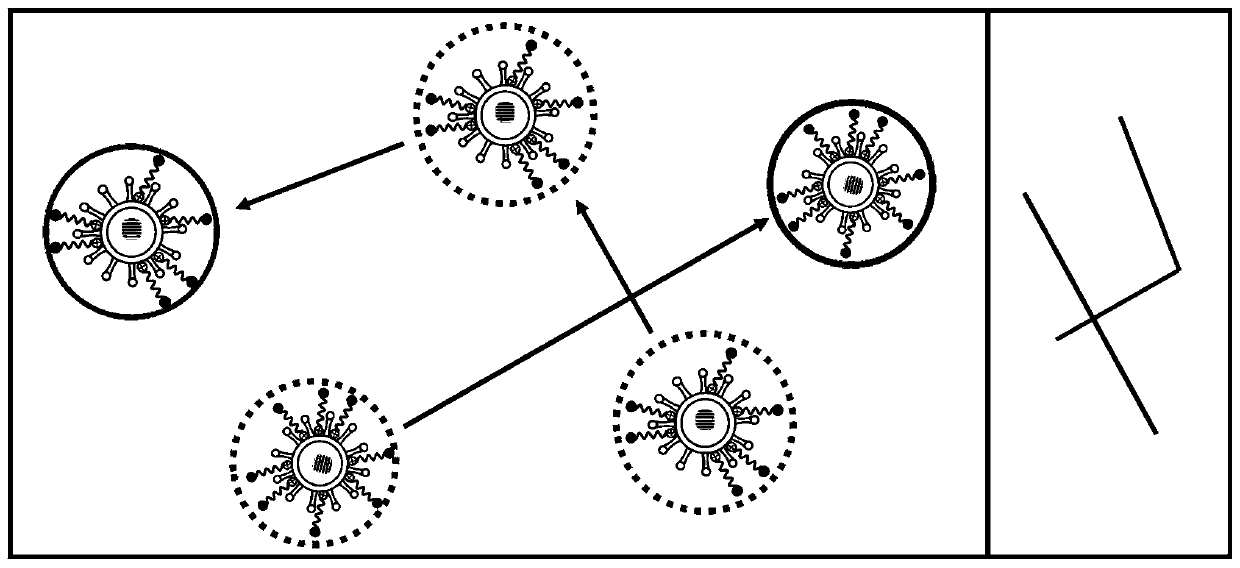Rapid virus detection method based on single-molecule total internal reflection fluorescence imaging technology
A technology of total internal reflection and fluorescence imaging, which is applied in the direction of fluorescence/phosphorescence, measurement devices, analysis materials, etc., can solve the problem of high cost
- Summary
- Abstract
- Description
- Claims
- Application Information
AI Technical Summary
Problems solved by technology
Method used
Image
Examples
Embodiment 1
[0070] Example 1 Total Internal Reflection Fluorescence Imaging Device for SARS-COV-2 Detection
[0071] The invention provides a total internal reflection fluorescence imaging device for detecting SARS-COV-2, such as figure 1 As shown, it includes: an optical microscope system, a fluorescence excitation system, a signal acquisition system, and a microfluidic sample cell. As shown in the figure, the optical microscope system includes 11: a cover glass, 12: an objective lens, 13: a dichroic mirror, 14: an emission filter, and 15: a reflecting mirror. The fluorescence excitation system includes 21: a laser. The signal acquisition system includes 31: a charge-coupled device, and 32: a computer. A fluorescence excitation system is used to provide an excitation light source. The signal acquisition system is used for receiving fluorescent signals and converting the fluorescent signals into corresponding data signals. The microfluidic sample pool is used for storing the solution ...
Embodiment 2
[0075] Example 2 Rapid detection method of SARS-CoV-2 based on single-molecule fluorescence imaging technology
[0076] A method for rapid detection of novel coronavirus (SARS-CoV-2). The method includes the following steps: (1) fluorescently labeling short-chain ssDNA (single-stranded DNA, no specific requirement). (2) The fluorescently labeled ssDNA is added to the detection solution containing ionic halides, and the fluorescently labeled probe is electrostatically combined with the SARS-CoV-2 to be tested. (3) Place the solution to be tested on the total internal reflection fluorescence imaging device used for SARS-CoV-2 detection in Example 1 to detect fluorescent point signals. (4) Use fluorescent point coordinate positioning and least square method algorithm tracking to realize diffusion coefficient statistics. (5) The diffusion coefficient is used as the "unimolecular dynamics fingerprint signal" to calculate the average hydrodynamic diameter of the virus, and the dou...
Embodiment 3
[0084] Example 3 Tracking and quantitative detection of SARS-CoV-2 at the single-molecule level
[0085] The automatic target recognition and tracking system automatically extracts the target through the CCD image of the imaging system and performs identification and tracking. Its main algorithms include image data preprocessing, image segmentation, target detection, feature extraction, and target tracking. In this example, the realization of SARS-CoV-2 tracking at the single-molecule level is to use the CCD element in the total internal reflection fluorescence imaging device for SARS-COV-2 detection to image the fluorescent signal. For the identification of the fluorescent signal It is first based on effectively segmenting the local pixels of the target and the background, processing it into a grayscale image and binarizing it. For fluorescent signal targets of bright spots, the binarization process is:
[0086]
[0087] Among them, g(x, y) is the gray value at the coordi...
PUM
 Login to View More
Login to View More Abstract
Description
Claims
Application Information
 Login to View More
Login to View More - R&D
- Intellectual Property
- Life Sciences
- Materials
- Tech Scout
- Unparalleled Data Quality
- Higher Quality Content
- 60% Fewer Hallucinations
Browse by: Latest US Patents, China's latest patents, Technical Efficacy Thesaurus, Application Domain, Technology Topic, Popular Technical Reports.
© 2025 PatSnap. All rights reserved.Legal|Privacy policy|Modern Slavery Act Transparency Statement|Sitemap|About US| Contact US: help@patsnap.com



